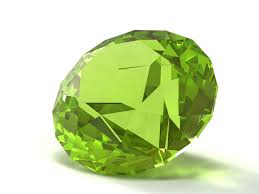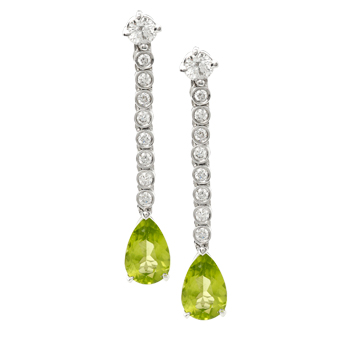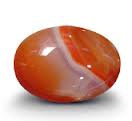 People born in the month of August are doubly lucky because they have two birthstones ascribed to them; the magical peridot and the talismanic sardonyx. If an August born wears a peridot, he/she will be protected against nightmares and endowed with power and influence to have a prosperous life. Peridot in Hawaii is believed to be the tears of the Goddess of Fire and Volcano, known as Pele. The stone is actually thrown out by volcanic eruptions on the island. Arizona, Myanmar, Brazil, Australia, Kenya and China are the major suppliers of the stone. Peridot comes in a wide variety of colours from green to brown. However, the lime green colour of peridot is most popular.
People born in the month of August are doubly lucky because they have two birthstones ascribed to them; the magical peridot and the talismanic sardonyx. If an August born wears a peridot, he/she will be protected against nightmares and endowed with power and influence to have a prosperous life. Peridot in Hawaii is believed to be the tears of the Goddess of Fire and Volcano, known as Pele. The stone is actually thrown out by volcanic eruptions on the island. Arizona, Myanmar, Brazil, Australia, Kenya and China are the major suppliers of the stone. Peridot comes in a wide variety of colours from green to brown. However, the lime green colour of peridot is most popular.
 Peridot in the fashion circuit is also known as ‘evening emerald’ as the green appears intense under artificial light. The first ever peridot was mined from the Arabic island of Zabargad. The island is scorching hot except in winters. Large numbers of peridots are found on the island especially near the beaches. There the stones grow to a size of several centimetres. Peridot is one of the oldest of gemstones to be worn and documented. A mention of peridot is found in the Old Testament and the ancient Egyptians inhabiting the earth during 1580 BC to 1350 BC wore peridot in bead form. It was also used as inlays, pendants, rings and intaglios.
Peridot in the fashion circuit is also known as ‘evening emerald’ as the green appears intense under artificial light. The first ever peridot was mined from the Arabic island of Zabargad. The island is scorching hot except in winters. Large numbers of peridots are found on the island especially near the beaches. There the stones grow to a size of several centimetres. Peridot is one of the oldest of gemstones to be worn and documented. A mention of peridot is found in the Old Testament and the ancient Egyptians inhabiting the earth during 1580 BC to 1350 BC wore peridot in bead form. It was also used as inlays, pendants, rings and intaglios.
The Turkish Sultans had the largest collection of peridots in the world. The Topkapi museum in Istanbul has a lovely gold throne in their display comprising of 955 peridot cabochons. The largest peridot weighing 310 carat is at the Smithsonian museum and a 192 carat olivine green peridot is adorning the Russian Crown jewels in Kremlin.
 Sardonyx, the other stone for August people, can be of varying colours of grey, red, brown, white and green. The stone can range from being translucent to opaque. The best quality Sardonyx is found in India and other varieties are found in Oregon, Uruguay, Brazil and Germany. In Greek Sard means reddish brown and the stone always has white bands on it. Both intaglios and cameos are formed from sardonyx. Sardonyx is an inexpensive stone and during the Renaissance period sardonyx was believed to bring the gift of eloquence and hence preferred by orators and public speakers. The most popular sardonyx was set in the gold ring sent to the Earl of Essex by Queen Elizabeth I as a token of friendship.
Sardonyx, the other stone for August people, can be of varying colours of grey, red, brown, white and green. The stone can range from being translucent to opaque. The best quality Sardonyx is found in India and other varieties are found in Oregon, Uruguay, Brazil and Germany. In Greek Sard means reddish brown and the stone always has white bands on it. Both intaglios and cameos are formed from sardonyx. Sardonyx is an inexpensive stone and during the Renaissance period sardonyx was believed to bring the gift of eloquence and hence preferred by orators and public speakers. The most popular sardonyx was set in the gold ring sent to the Earl of Essex by Queen Elizabeth I as a token of friendship.